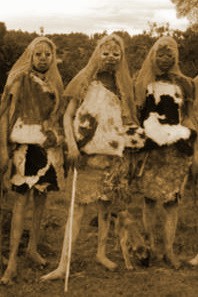In 1909, Hollis when writing on the Nandi, collected a Kalenjin tale that when studied proves to be of ancient provenance. It is the story of the origin of circumcision.
It is transcribed here as Hollis heard and transcribed it in 1909. This is crucial since this was one of the first external contacts in Nandi. This means the tale or rather the tellers had yet to be influenced by Western religion and way of thought, which has tended to cause revisions of folk tales.
The first man who practiced circumcision in Nandi is said to have been one Kipkenyo, who came from a country called Do, and who after staying on the hills called Tuluet-ap-Seike and Tuluet-ab-Rir, passed through the Angata nanyokie, and settled in the Kakipoch division of Nandi. In those days Nandi was known as Chemngal, a name which is still used by the Elgeyo and other allied tribes when referring to the Nandi country and people.
The story goes that Kipkenyo had a number of brothers and sisters who all died when they reached puberty, so Kipkenyo decided when he had a number of children of his own to 'change' them all at this age. He therefore circumcised them, and as none of his children died, the Nandi followed his example, with the result that circumcision became general.
- *own emphasis
Numerous studies have shown the efficacy of Kalenjin folktales in capturing history over long periods of time. The challenge is whats called telescoping, events from eons ago sounding like they occurred just yesterday, This therefore is an attempt to as it were, peer back in time through that very telescope.
The first man who practiced circumcision in Nandi is said to have been one Kipkenyo,...


